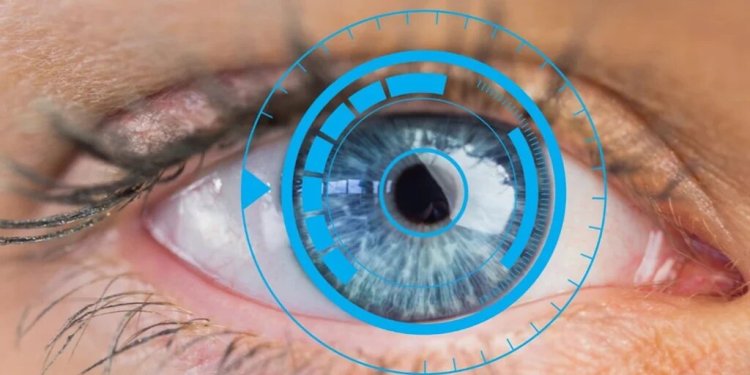Can Squint Be Cured? Explore Safe, Modern Surgery Options
Wondering if squint can be cured? Discover modern squint surgery techniques and how to choose the right care for clear, aligned vision.

A squint, medically known as strabismus, is more than just a cosmetic concern. It can affect how the eyes work together, leading to issues like double vision, eye strain, or even vision loss in one eye if left untreated. For children, it can interfere with development and learning. For adults, it can impact confidence, work, and quality of life. Squint Surgery
Fortunately, advances in eye care have made it possible to effectively treat and often cure squint through carefully planned medical and surgical interventions. Understanding your options is the first step toward clearer vision and greater comfort.
Understanding What Causes a Squint
Squint occurs when the eye muscles do not work together properly. One eye may turn inwards, outwards, upwards, or downwards while the other focuses correctly. This misalignment can be constant or may appear only under stress, fatigue, or illness.
Common causes include:
-
Muscle imbalance or weakness.
-
Uncorrected refractive errors like farsightedness.
-
Neurological issues affecting eye movement.
-
Genetic or congenital factors.
-
Injury or trauma to the eye or nerves.
Identifying the underlying cause is critical for planning treatment.
Can Squint Be Corrected Without Surgery?
In many cases, especially in children, early squint correction does not require surgery. Depending on the type and cause, your eye specialist might recommend:
-
Glasses – Corrective lenses may fully resolve squints related to focusing issues.
-
Patching Therapy – A patch over the stronger eye can encourage the weaker eye to work better.
-
Prism Lenses – These help redirect light to reduce double vision.
-
Vision Therapy – A series of guided eye exercises to improve coordination.
These non-surgical options are often the first line of treatment, especially in young children whose visual systems are still developing.
When is Squint Surgery Recommended?
Surgery is usually recommended when non-invasive methods do not provide enough correction, or if the misalignment is severe. It may also be the best option when the squint is causing double vision, headaches, or cosmetic concerns.
You might be a candidate for squint surgery if:
-
The squint persists despite wearing corrective glasses.
-
The eye turn is noticeable and affecting daily life.
-
There’s a loss of depth perception or binocular vision.
-
The squint is congenital or developed after trauma.
An experienced squint surgeon will evaluate your eye muscles and alignment to decide the best course of action.
What Happens During Squint Surgery?
Squint surgery is a safe and effective procedure aimed at aligning the eyes by adjusting the eye muscles. It is usually performed under general anesthesia in children and local or general anesthesia in adults.
During the procedure:
-
The surgeon makes a small incision on the conjunctiva (the white part of the eye).
-
The eye muscles are either tightened or repositioned, depending on the direction of the squint.
-
The incisions are closed with dissolvable stitches.
The eyeball is not removed or taken out at any point. The surgery typically lasts about 45 minutes to an hour, and patients often go home the same day.
Recovery After Squint Surgery
Recovery is generally smooth, with most people returning to normal routines within a week. Some redness, mild discomfort, or foreign body sensation may persist for a few days.
Post-surgery care may include:
-
Antibiotic and anti-inflammatory eye drops.
-
Avoiding rubbing or touching the eye.
-
Follow-up visits to monitor healing and eye alignment.
Children may need additional therapy after surgery to develop better visual coordination, especially if the brain has been suppressing one eye’s image.
Success Rates and Expectations
Squint surgery has a high success rate, especially when performed by experienced ophthalmic surgeons. In some cases, more than one surgery may be required over time, particularly for complex or longstanding squints.
It is important to set realistic expectations. While surgery aligns the eyes cosmetically and often improves function, ongoing vision therapy or glasses may still be necessary for optimal results.
Patients who receive timely treatment report:
-
Better depth perception.
-
Improved eye contact and social interaction.
-
Relief from eye strain and double vision.
-
Increased confidence in work and social settings.
How to Choose the Right Eye Hospital for Squint Surgery
Choosing where and who performs the surgery can be as crucial as the surgery itself. Patients and parents should look for:
-
A super speciality eye hospital with dedicated pediatric and adult squint services.
-
Ophthalmologists with extensive experience in squint surgery and related therapies.
-
Access to modern diagnostic equipment and surgical technologies.
-
A caring, compassionate team that provides support before and after the procedure.
Many families also find it helpful to consult hospitals known for excellence in both squint correction and broader eye care services like cataract treatment, where they often find highly regarded professionals including the Best Cataract Surgeon for any additional vision concerns.
When Squint Surgery and Cataract Care Overlap
While squint and cataracts may seem unrelated, they sometimes coexist—especially in older adults or individuals with long-standing eye issues. In such cases, managing both conditions under the care of an integrated eye care team ensures better outcomes.
Choosing a hospital that offers comprehensive care—from advanced cataract surgery to pediatric squint services—ensures that patients don’t need to navigate separate systems for each condition.
Conclusion:
Squint is a treatable condition, and with the right approach, many people can achieve excellent visual alignment and improved quality of life. Modern squint surgery is safe, effective, and supported by advanced diagnostics and compassionate care.
For those seeking a trusted destination for eye care, Maxi Vision Eye Hospital stands out as a super speciality eye hospital, offering expert-led squint correction, pediatric ophthalmology, and access to the best cataract surgeon teams under one roof. With a patient-first approach, Maxi Vision is committed to restoring vision with precision, empathy, and excellence.
What's Your Reaction?
















.jpg)
